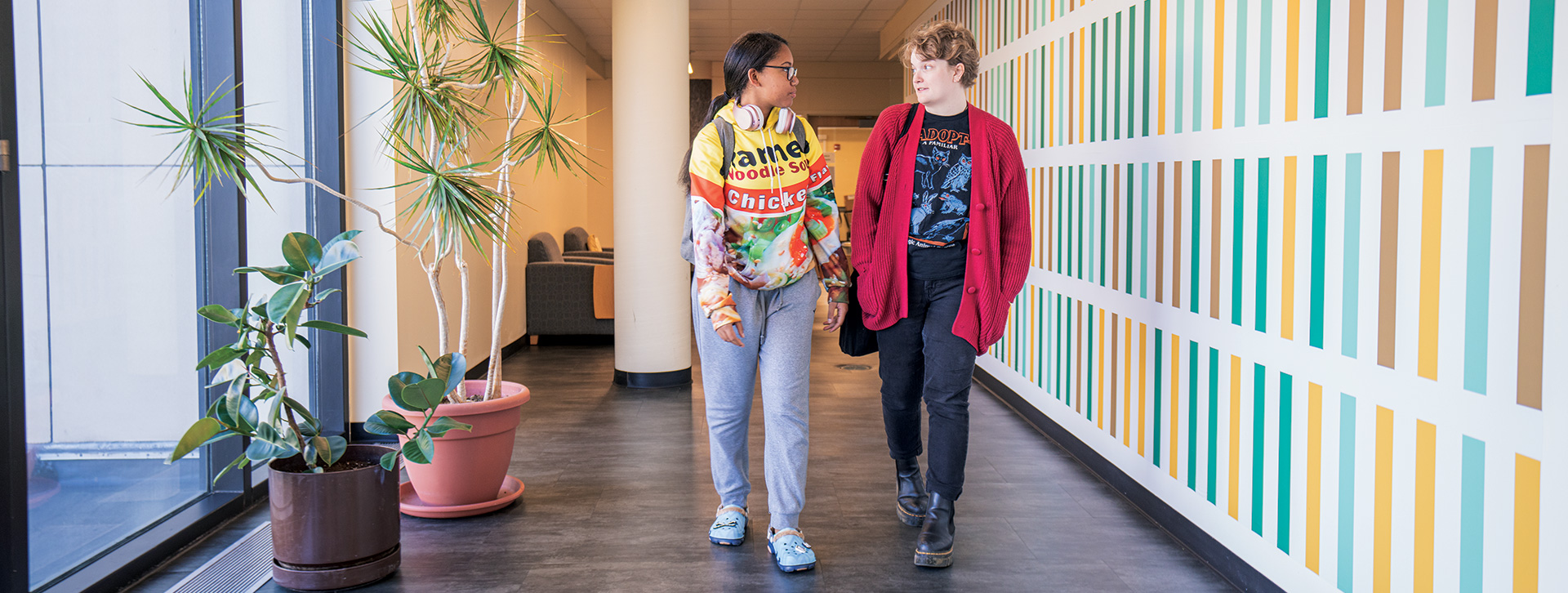A Vision Centered on Mobility
To meet the array of challenges facing Hollins and all institutions of higher learning in this decade and beyond, President Mary Dana Hinton knew that the university needed a shared vision and bold path forward.
“A strategic plan cannot merely be a forecast or a prediction,” she explained. “An organizing vision must be at the center of the plan, seeing what a unified Hollins could become, that is attainable, even if incredibly difficult. And an effective vision requires sufficient resources, collective energy, and enthusiastic buy-in.”
As such, when Transforming Learning, Transforming Lives: The Levavi Oculos Strategic Plan was officially approved at the Fall 2023 meeting of the Board of Trustees, it was not merely an exciting beginning of something that will enhance the landscape of what is possible for Hollins. Rather, it was the culmination of a deliberate and thoughtful process built around input and conversation. Building collective energy and enthusiastic buy-in for the plan were priorities from the start.
During an 18-month span, Hinton and key leaders organized almost 40 different planning sessions to listen and gather input from the full array of stakeholders. Over the course of that time, some 500 people—including more than 200 students and almost as many alumnae/i and donors—took advantage of the opportunity to express their hopes and dreams, as well as their concerns, for what Hollins could be in five to 10 years.
The resulting plan, necessarily bold and ambitious, carries the hopes of hundreds if not thousands. The challenge of achieving the goals within it is lightened by the involvement of so many voices.
By 2030, Hollins will have implemented integrative learning practices, equity-minded access policies, extensive experiential learning, compassionate challenge, and a holistic wellness focus to meet our mission call and ensure our sustainability. — Vision Statement for Transforming Learning, Transforming Lives: The Levavi Oculos Strategic Plan
Accelerating, Expanding Upon The Hollins Mission
The core of this plan is, simply and boldly, to become the nation’s higher education leader in economic, social, and civic mobility.
“Everything in the plan is in there to serve that overarching goal of social mobility for our students,” said Nora Kizer Bell Provost Laurie McLary, who served as one of eight planning team leaders working alongside President Hinton throughout the developmental process.
The plan is divided into three essential categories: Access, Academic Excellence, and Wellness. In early conversations with the planning committees, there was agreement that these are not seen as stand-alone groupings, but rather as interdependent, where the success of achieving the goals in one category is inextricably linked to the success of achieving goals in the other categories.
As such, the visual concept of gears came into play, as all three must work together for movement to take place. Within those gears are a total of 11 key goals, and all must coordinate to serve the vision of a university focused on maximizing economic, social, and civic mobility for its students.
The 11 Primary Goals of the Strategic Plan
Gear One:
Academic Excellence
Academic Renewal and Interdisciplinary Integration
Transformative Learning to Advance Social Mobility
A Humane Workplace for Thriving
Expand Online Degree Offerings for Adult and Continuing Education Learners
Gear Two:
Access
Remove Financial Barriers to Undergraduate Education
Provide Premier Pathway to — and Through — College: Holistic Student Services and Support Systems
Strengthen Impact as a High-Value Regional Partner
Gear Three:
Wellness
Build a Dynamic, Comprehensive Wellness Center
Increase Engagement In and With the Natural World
Create a More Inclusive and Accessible University
Implement Comprehensive Equine Studies Program
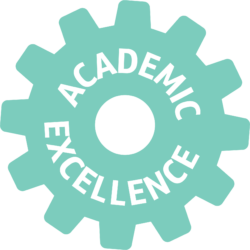 In the area of Academic Excellence, the goal foremost in McLary’s mind is the proposed Center for Teaching Excellence.
In the area of Academic Excellence, the goal foremost in McLary’s mind is the proposed Center for Teaching Excellence.
“We need to intentionally develop what I think of as interlocking ecosystems,” she said, “where students encounter classrooms that are attuned to their needs as learners. We know there are effective ways, inclusive teaching practices, that can help students from a variety of backgrounds.
“This center would be a vital space for the faculty. We need to provide our faculty with ongoing professional development opportunities that expand their understanding of how students learn, of evidence-based teaching practices. We need to support them in adapting to the new and evolving needs of our learners.”
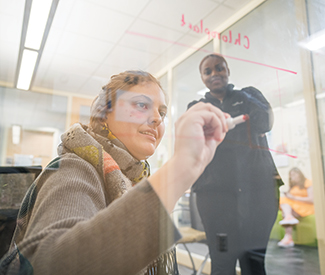 The strategic plan also includes exploring an alternative school calendar—such as shorter blocks so that students can focus on fewer classes at one time—that could better accommodate a diversity of learners, such as Horizon (nontraditional adult) students and graduate students as well as those who are commuters or need to work to afford enrolling. Expanding summer offerings is also in the works.
The strategic plan also includes exploring an alternative school calendar—such as shorter blocks so that students can focus on fewer classes at one time—that could better accommodate a diversity of learners, such as Horizon (nontraditional adult) students and graduate students as well as those who are commuters or need to work to afford enrolling. Expanding summer offerings is also in the works.
Another involves re-envisioning how Hollins structures its academic offerings. As President Hinton has noted, the academic divisions that appear in the 1938 yearbook are the same that exist today.
“Re-envisioning our academic structure will allow us to offer more interdisciplinary learning experiences,” McLary said. “Dispositional learning and mindsets, such as cultivating the ability to work across differences and self-awareness, combined with interdisciplinary learning will allow students to engage in an educational experience that includes areas of disciplinary knowledge with intellectual and social growth and development. Interdisciplinary learning coupled with grappling with real-world problems will prepare students better for an unscripted future.
“And, importantly, we need to find areas of clear strength and distinction for Hollins and lean into those.”
 Among the most ambitious and game-changing goals in the Levavi Oculos Strategic Plan is to make Hollins affordable for all enrolling undergraduate students. Or, more succinctly, “worryfree tuition.”
Among the most ambitious and game-changing goals in the Levavi Oculos Strategic Plan is to make Hollins affordable for all enrolling undergraduate students. Or, more succinctly, “worryfree tuition.”
“‘Worry-free tuition’ is a shortcut way of acknowledging the wide range of economic challenges and complexities that students face when considering college,” noted Ashley Browning M.A.L.S. ’13, vice president for enrollment management, who served as coleader of the access team planning committee. “It’s not merely about the price tag or what your family qualifies for, or additional pressures on your family that may not come into the more formal financial aid equation.”
Worry-free tuition represents a pathway to access Hollins without the financial and emotional burden of tuition costs, she said. “It’s a powerful and effective way to bring the Hollins experience to academically talented students from all socioeconomic backgrounds.”
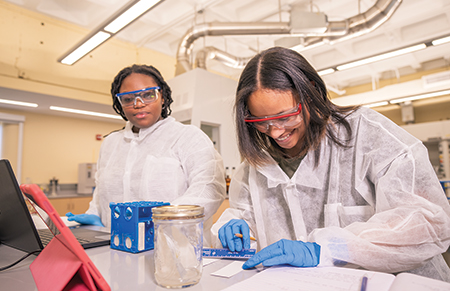 Browning noted the tremendous success seen with the HOPE (Hollins Opportunity for Promise through Education) Scholarship (hope.hollins.edu) for undergraduate students in the Roanoke area in only its first two years.
Browning noted the tremendous success seen with the HOPE (Hollins Opportunity for Promise through Education) Scholarship (hope.hollins.edu) for undergraduate students in the Roanoke area in only its first two years.
The HOPE Scholarship, first offered to undergraduates entering in the fall of 2022, gives Pell-eligible students within 40 miles of campus the opportunity to attend Hollins tuition-free. Preference is given to students with financial need. So far, 62 students have enrolled in the two years the program has been available, and both their GPA and retention rate are above average compared to other students, Browning said.
“The goal would be to expand the effectiveness of this effort across different geographic regions,” she added.
Research is underway regarding how Hollins might best approach bridging the cost of tuition for future students.Meeting this goal would require a tremendous influx to the university’s endowment. Additional tactics to support worry-free tuition are also being studied, including programs akin to the “work college” approach, most prominently adopted by Berea College. According to the Work Colleges Consortium, the concept requires that residential students participate in a comprehensive work-learning-service program for all four years of enrollment; all resident students have jobs.
Beyond that transformational aspect of the Access gear are goals intended to expand entry points for nontraditionally aged students who could find their place at Hollins. These include possible dual enrollment opportunities for high school students; expanding three-year degree options; bridging more common barriers such as technology access (e.g., becoming “an Apple school”); and expanding the support networks already developing within the university’s department of student success, well-being, and belonging.
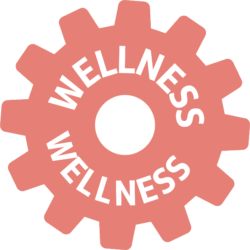 The centerpiece of the third gear, Wellness, would be a comprehensive, holistic wellness center to house a range of wellness-related programing and services for students and employees. The Cynthia L. Hale ’75 Holistic Wellness Center will be located within a significant expansion of the current athletic complex on the Back Quad of campus.
The centerpiece of the third gear, Wellness, would be a comprehensive, holistic wellness center to house a range of wellness-related programing and services for students and employees. The Cynthia L. Hale ’75 Holistic Wellness Center will be located within a significant expansion of the current athletic complex on the Back Quad of campus.
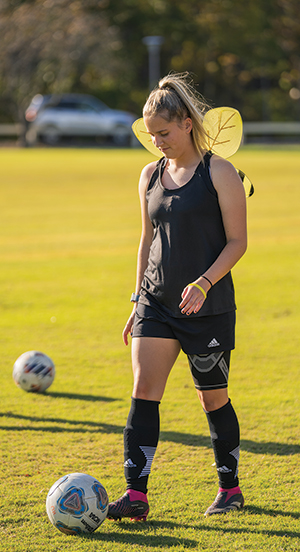 Research has made clear that student success and excellent educational outcomes are intricately related to student well-being, including physical, emotional, environmental, and spiritual wellness. The programs located in the wellness center will not only collaborate with the athletics department to expand fitness and recreational programming to meet the broad range of interests of the student body, but the center will also include spaces for health and counseling services, wellness therapies, spiritual and meditation retreat spaces, nutritional services and cooking, classrooms, and more.
Research has made clear that student success and excellent educational outcomes are intricately related to student well-being, including physical, emotional, environmental, and spiritual wellness. The programs located in the wellness center will not only collaborate with the athletics department to expand fitness and recreational programming to meet the broad range of interests of the student body, but the center will also include spaces for health and counseling services, wellness therapies, spiritual and meditation retreat spaces, nutritional services and cooking, classrooms, and more.
“The pandemic exposed how underprepared and understaffed colleges and universities were to support the increasing mental health and wellness needs of current students,” said Kerry Edmonds, executive vice president and chief operating officer and one of three leads for the wellness planning team. “We simply cannot achieve goals regarding mobility for our graduates if we do not provide them the tools, programs, and pathways to help students flourish and grow both intellectually and socially in order to reach their full potential.”
In addition to the wellness center, the plan includes goals for expanding student opportunities in outdoor spaces on and beyond the campus, creating an equine studies program that could expand on the great things already happening within Hollins’ riding center, and updating key buildings and spaces within the university to make them more accessible and inclusive.
A key focus in this final area, Edmonds noted, would be a significant renovation to West Hall, including the addition of a new climate control system (HVAC) and an elevator. Both improvements to West will support current students during the academic year but will also allow Hollins to expand its summer programming and extend the appeal of the historic building.
A Plan that Embraces Community
Hinton is confident that Transforming Learning, Transforming Lives: The Levavi Oculos Strategic Plan upholds Hollins’ responsibility to the next generation of learners entrusted to the university. However, she also emphasized that it does not solely reflect the aspirations of a select few.
“Everyone who has ever invested their time here as a student, who has graduated, who has given of their time or their resources, who has trusted their child to this institution, holds ownership in what Hollins is and should be,” she stated. “This plan needed to honor as many of its community members as possible, and I believe it does that, which is why I’m so excited and eager to move forward.
“I can’t stress how important it was, to me and to our dedicated trustees, that this strategic plan be something that represented not just my hopes and vision, and not just their hopes and vision, but a plan that honored the hopes and vision of as many of our stakeholders as possible. We are but stewards of this incredible place. This isn’t my Hollins or the trustees’ Hollins, but your Hollins and our Hollins.”

